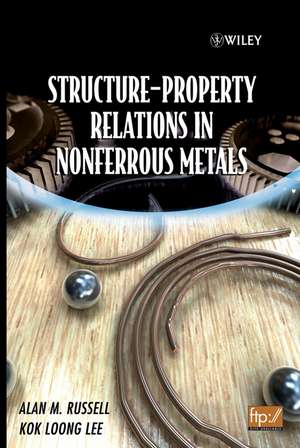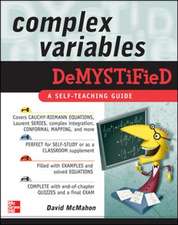Structure–Property Relations in Nonferrous Metals
Autor A Russellen Limba Engleză Hardback – 30 iun 2005
While most undergraduate metallurgy textbooks focus on iron, the most commercially important metallic element, Structure-Property Relations in Nonferrous Metals is a comprehensive textbook covering the remaining eighty-two nonferrous metals. Designed to be readily accessible to materials engineering students at all academic levels, the text describes the relationships between the atomic-, crystal-, and micro-structures of nonferrous metals, and such physical behaviors as strength, ductility, electrical conductivity, and corrosion.
In order to capture and retain students' interest, the authors maintain a strong focus on practical application. Each chapter supplements fundamental concepts with engaging examples from actual engineering case studies and industrial projects, directly relating content to real-world application.
Part One describes the general concepts of crystal- and micro-structures and the implications of these structures for the mechanical, thermal, and electronic properties of nonferrous metals, intermetallic compounds, and metal matrix composites.
Chapters focus on such relevant topics as:
- Point, line, and planar defects and their effects on a material's properties
- Dislocations and strengthening mechanisms
- Fracture and fatigue
- Strain rate effects and creep
- Deviations from classic crystallinity
- Processing methods
- Composites and intermetallic compounds
Part Two builds on Part One by exploring how the concepts presented define the properties of a particular metallic element and its alloys, and how these properties contribute to the engineering uses of each nonferrous metal.
An accompanying ftp site contains homework problems, appendices, bibliographies, and tables of data indicating the nations producing metallic elements and the quantities produced. Structure-Property Relations in Nonferrous Metals is a valuable reference for both students in undergraduate metallurgy courses and practicing engineers.
Preț: 1109.63 lei
Preț vechi: 1219.38 lei
-9% Nou
212.32€ • 222.28$ • 175.69£
Carte tipărită la comandă
Livrare economică 05-19 aprilie
Specificații
ISBN-10: 047164952X
Pagini: 520
Dimensiuni: 178 x 254 x 29 mm
Greutate: 1.08 kg
Editura: Wiley
Locul publicării:Hoboken, United States
Public țintă
This book is designed to be a textbook on fundamental concepts of structure–property relations plus a description of how these concepts apply to every metallic element except iron. Essentially every university department of materials science and engineering (MSE) offers a course on the relations between crystal structure, microstructure, and the properties of metals and alloys, usually at the junior or senior level. Examples of such courses are: U. of Illinois at Urbana–Champaign: MATSE 343: Design of Engineering Alloys. Examines the application of science and engineering principles to the design, selection and performance of engineering alloys. Studies alloy classes, design, and effect of alloying elements, relation to processing variables and structure–property relationships; design project.Georgia Tech, MSE 4006.Processing and Applications of Engineering Alloys. Influence of composition and processing variables on the microstructure and properties of nonferrous and ferrous alloys.
MSE 3012. Metals and Alloys. Structure of metals/alloys. Crystal structure/defects (point defects, dislocations, grain boundaries). Microstructure. Properties of metals, especially mechanical properties.







